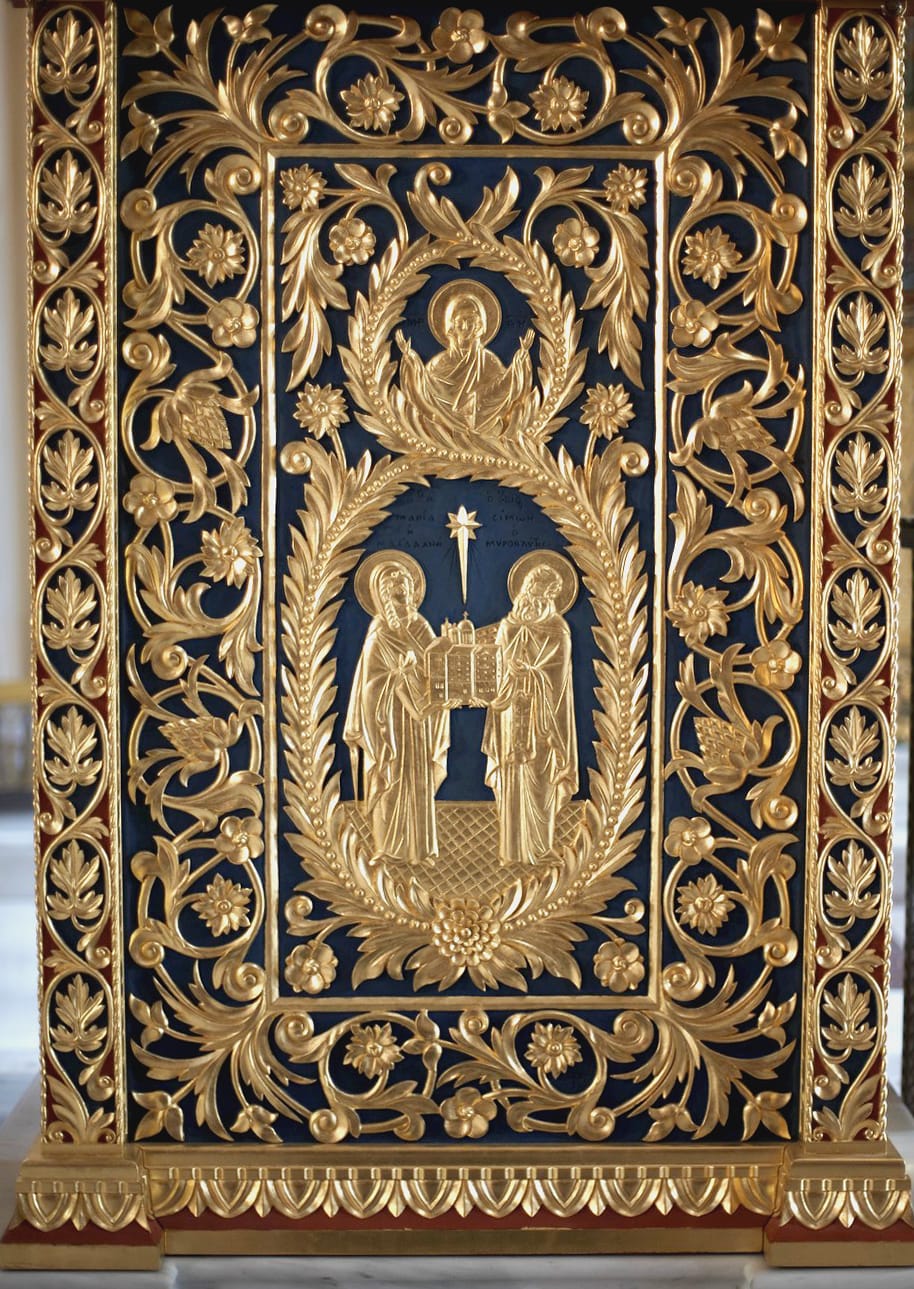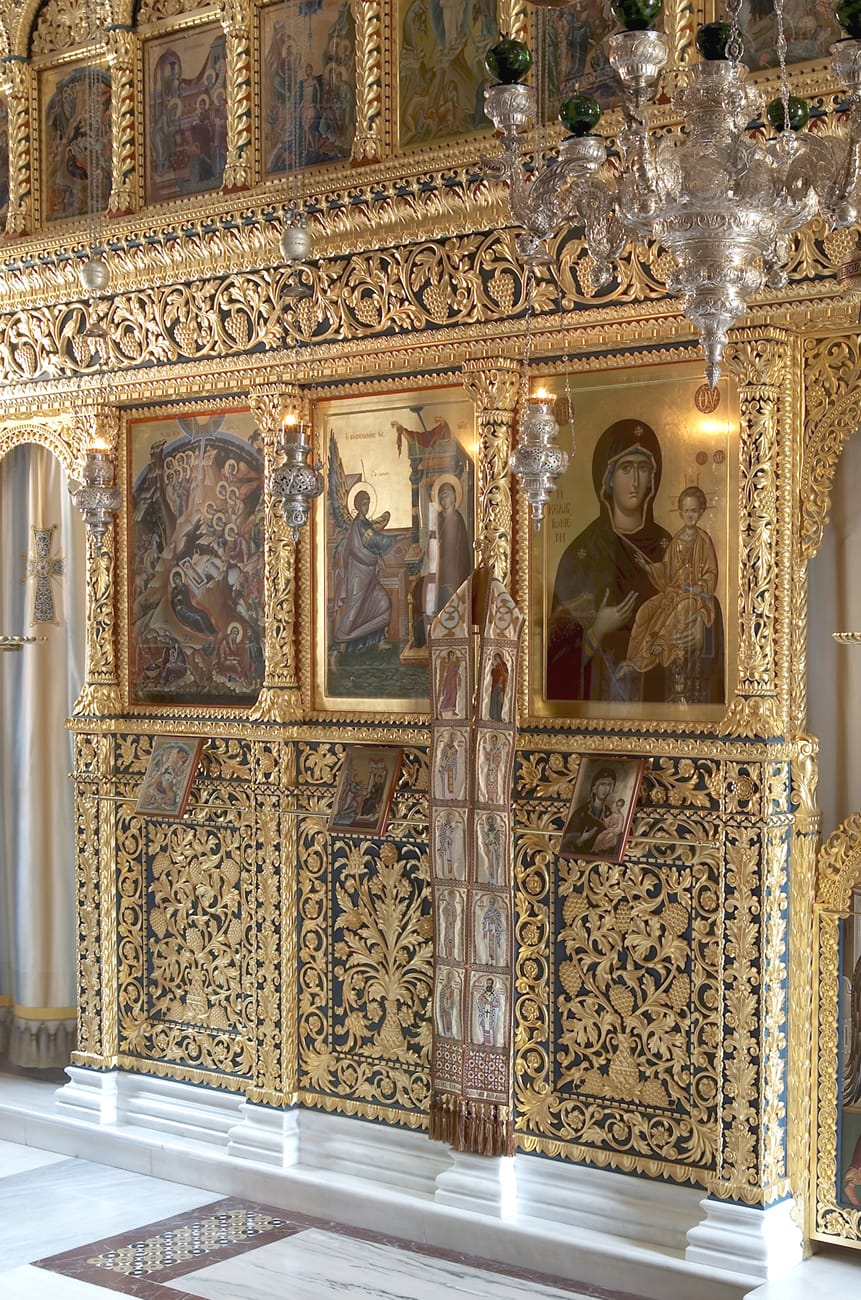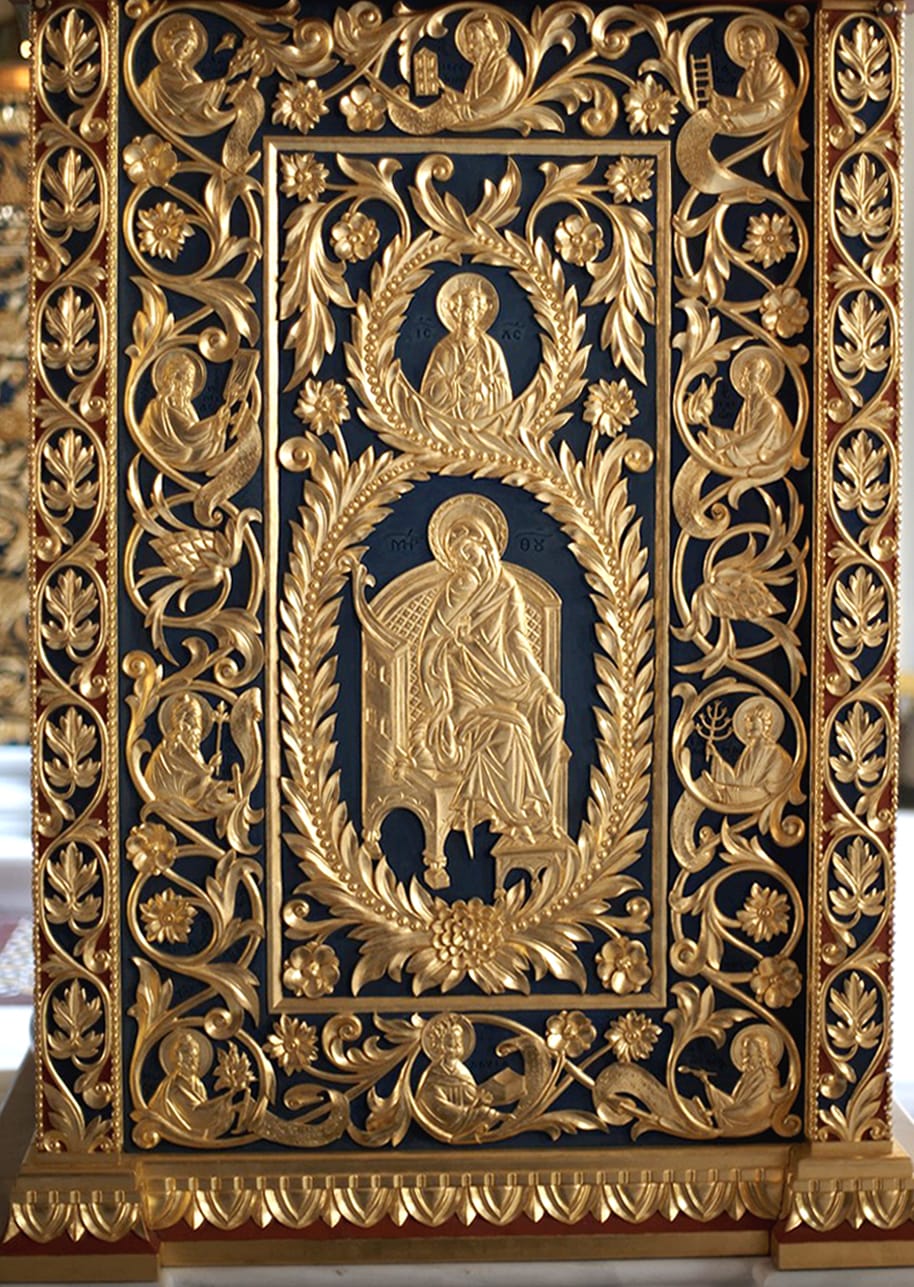Woodwork Shop
At the Woodwork shop, situated in the south eastern part of the Metochion, the long tradition of this craft is preserved by nuns and external associates.
The wood-carved door of the cruciform grand Trapeza [dining hall], crafted in 1993, is a typical example of this work; the theme is the blessing of the bread and fish by Christ, known as “the feeding of the multitude”. The scene is vivid, depicting Christ blessing and his disciples handing out the goods multiplied to the crowd of men, women, and children. The entire composition is a country scene, presenting birds, trees and rocks.
Another example of wood carving is the door to the church of St. Nicolas at the cemetery of the Convent. The composition includes St. Nicolas, but also the Tree of Jesse, the Resurrection, and Abraham’s bosom, where the deceased rest, with six-winged angels carved at the bottom of the door.
Excellent woodwork examples are also found in the painted wooden ceilings decorating numerous official premises of the Convent. The dining room ceiling is impressive, where the grouting forms crosses, as some of the joints are intersected at right angles with the wood plank joints at regular intervals. The ceiling of the Mother Superior’s resident is made in the same manner, while on the wood-carved ceiling of the Synodikon there are portraits of the four Gospel authors supporting the heavens unfolding like a scroll from the ceiling centre to depict the scripture “and the sky was split apart like a scroll that is rolled up”.
The wood-carved iconostasis of the Katholikon observes strict specifications. Initial designs started in 2000 in the drawing room, based on the figures and compositions of Mt. Athos Monasteries, and, mainly, of the Protaton. As with all artistic works undertaken at the Convent, in this case various other versions and depictions of the same scenes through times were also studied besides the study of the Protatoniconostasis. The Annunciation appears on the door to the sanctum, while the alternating parapets of the iconostasis are adorned with vines and birds on one side and vases with flowers[anthemia] on the other. In-between there are water springs with birds and vines similar to those spiralling up the pillars. The perforated arched beams above the doors present the 12 Great Feasts of the year, in excellent forms, with leaves and flowers [anthemia]. At the two ends two dragons have been drawn holding the Passion scenes [‘lypitera’]: Christ Crucified, the Virgin, and his beloved disciple, John. The background of the gold-leaf wood carving works is painted with icon paints (crocus), usually blue (azurite or cobalt) and red ochre.


